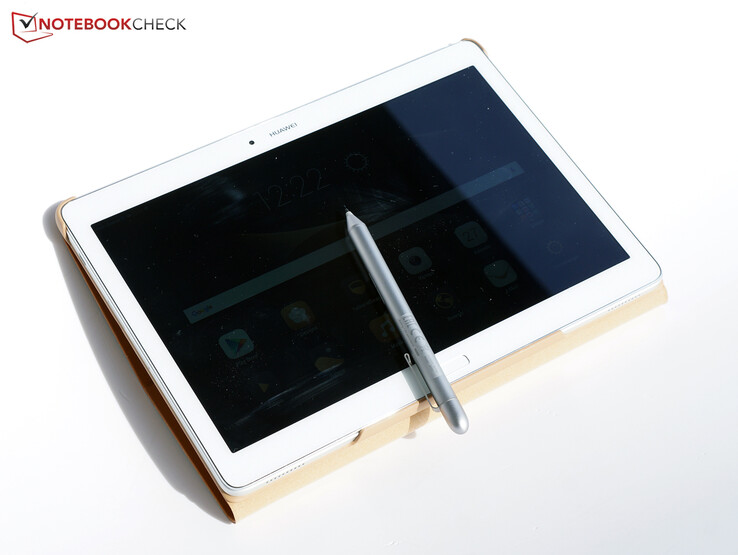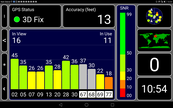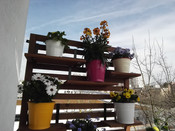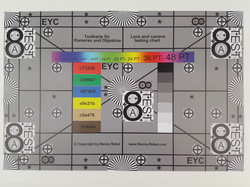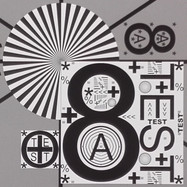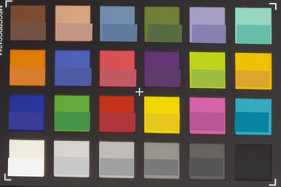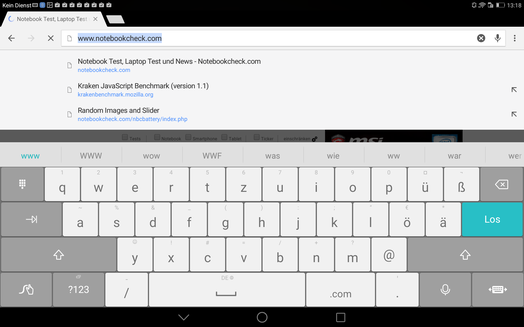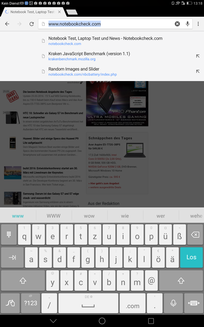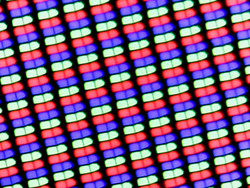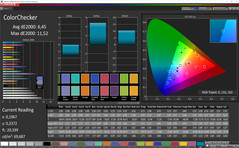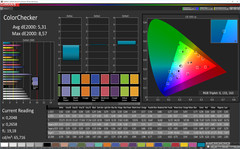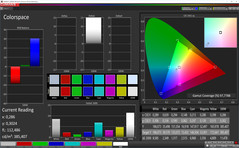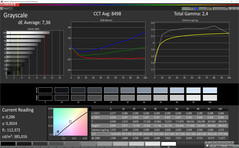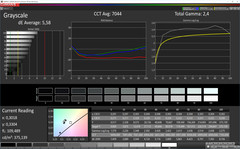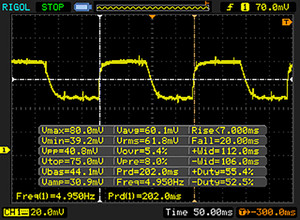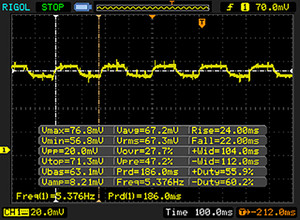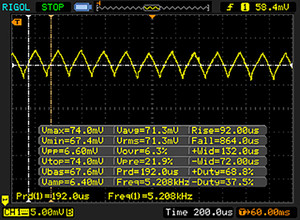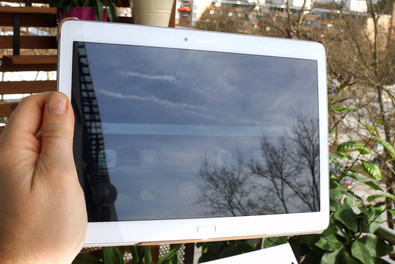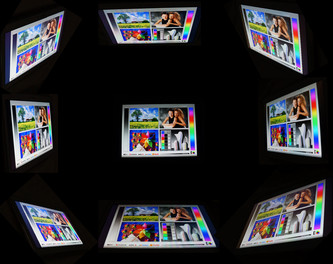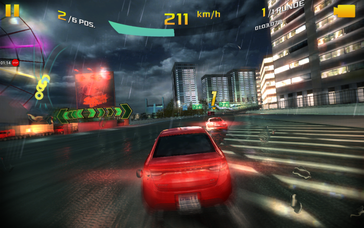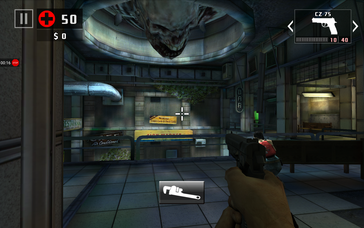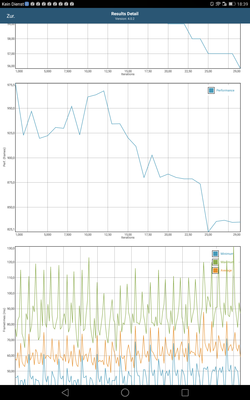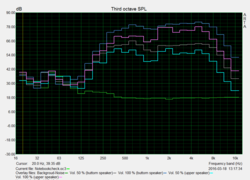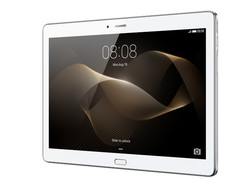Huawei MediaPad M2 10 Tablet Review
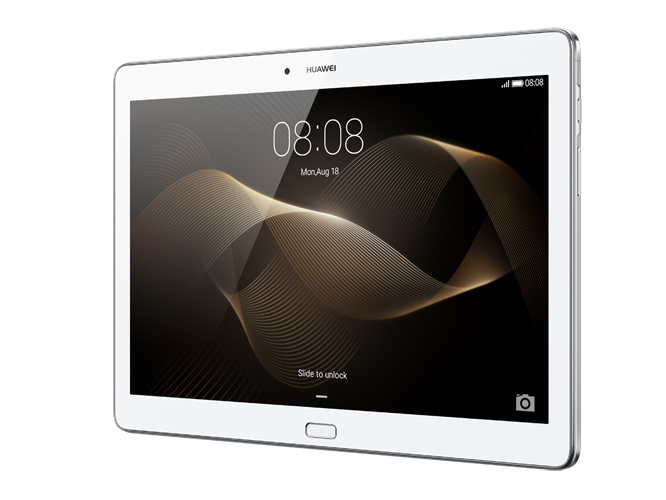
For the original German review, see here.
Huawei introduces a new generation of its 10-inch multimedia tablets to the market after quite some time: We tested the former MediaPad 10 FHD and MediaPad 10 Link in 2012 and 2013. The new model is dubbed MediaPad M2 10, and is to impress both its opponents and the buyers alike with a fast octa-core SoC, Full HD panel and, like its predecessor, a bold price.
However, there are various models of Huawei's MediaPad M2 10 to choose from and their prices currently range from around 320 to 460 Euros (~$360 to $518) on the Internet. The standard model comes with 2 GB of working memory and 16 GB of storage capacity, and the premium model features 64 GB of storage and 3 GB of working memory. Then there are versions of both models with and without LTE. We are testing the standard model with LTE here.
We use middle priced multimedia tablets with a size of approximately 10 inches for comparison. LG's G Pad II, Acer's Iconia Tab 10 A3-A30 and Samsung's Galaxy Tab A 9.7 are among these.
Case
Huawei's MediaPad M2 10 shares common design features as the iPad Pro. Only models with a white front and silver back are presently found on the German market, but photos of a version with a gold-colored back exist on the Internet.
The choice of material is metal. It is characterized by a matte and non-slip finish, and differs from its MediaPad Link and MediaPad FHD predecessors with a slightly more angular shape. In line with current mobile technology standards, a fingerprint scanner is incorporated on the front that is also the "home" button.
Huawei's M2 10 is not a lightweight weighing 500 grams (~1.1 pounds), but it feels good and substantial in the hand. With a height of just 7.3 millimeters (~0.3 inches), it is thin and the other dimensions are also compact so that only a narrow frame is created around the display.
In fact, the choice of materials and design are good and the MediaPad M2 10 is also rigid. Although pressure on the front becomes slightly visible in the liquid crystals, that is only to a very small degree. Pressure on the back is not passed on to the screen. However, the tablet produces a loud cracking noise in its middle when twisted, which causes concern for the device and reduces the quality impression.
Connectivity
As said, different configurations of Huawei's MediaPad M2 10 exist. Our review sample comes with 2 GB of RAM and a slightly tight 16 GB of storage that can be expanded by up to 128 GB via a micro-SD card. Apps can also be moved to the micro-SD card (Apps2SD).
To be fair, it has to be pointed out that LG'S G Pad II and Samsung's Galaxy Tab A 9.7 no longer offer a fixed storage. Only Acer's Iconia Tab 10 A3-A30 has 32 GB. Besides, there is also the premium model of the MediaPad M2 10 with 64 GB of storage.
The power and data port supports USB standard 2.0 Type B. Thus, the connector has to be inserted right way up. It does not matter which side of the plug is inserted in the newer Type C. USB OTG is also possible, and thus external USB storage devices can be connected to the tablet.
Software
The operating system of Huawei's MediaPad M2 10 is based on Android 5.1. Huawei covers it with Emotion UI 3.1. Everyone who has ever used an Android tablet will accommodate quickly, and even newcomers will not be puzzled much. The modifications to the system are mostly graphic in nature, but Huawei has added some useful features: The operating system's looks can be changed quite extensively via "Design". The tablet manager allows accelerating the phone, clean the memory or just manage what notifications apps are to be displayed.
The most unusual piece of software on Huawei's MediaPad M2 10 is likely "Bamboo Paper". Handwritten notes using a finger or a stylus can be made with it. The capacitive touchscreen can be disabled so that only stylus inputs and not unintentional streaks by a hand are accepted. The settings for point size and selection of pens will not satisfy professionals, but the software is absolutely sufficient for occasionally sketching on the tablet.
Communication & GPS
The presently cheapest model of the MediaPad M2 10 is available for approximately 320 Euros (~$360) on the Internet. However, it only sports Wi-Fi for communicating with the Internet. An LTE module costs roughly 50 Euros (~$56) more at the moment. It allows using four GPRS frequencies, four UMTS frequencies and five LTE bands. That should be enough for coping in most countries worldwide. The different LTE transmission options FDD (different bands for upload and download) as well as TDD (a time-shifted band for upload and download) are supported. The reception quality is also decent. We almost always had a very good signal both indoors and out in an urban area in the German Vodafone network.
The Wi-Fi module supports networks with up to standard 802.11 ac, making very fast network connections at 1733 MBit per second and more possible. We tested the reception quality with a FritzBox 6490 and were quite pleased: A signal strength of 75% was achieved at a distance of ten meters (~33 ft) from the router and through three walls. Pages opened very quickly. Three meters (10 feet) further and another wall resulted in half the signal strength; pages opened a bit slower but still fast.
A GPS module is naturally also installed, and Huawei's MediaPad M2 10 can thus be used for navigating or for local services. Although the module did not find us indoors, we were tracked quickly outdoors and the localization was also accurate enough with a deviation of four meters (~13 feet).
Cameras & Multimedia
Huawei does not believe the saying "no one uses a tablet for photographing", and installs considerably higher-resolution modules in its tablet than the equally priced rivals. Photos with 13 megapixels are shot with the rear-facing lens, which is supported by auto focus and flash. A flash is not found in many other tablets, either.
Just how well does the unusually high-resolution camera for a tablet fare? It takes decent pictures, especially from the landscape and even low-light photos are surprisingly good. However, closer objects look unfocused and blurry in detail when zoomed. High-end smartphone cameras clearly have a lead here.
We also photographed a reference card with the primary camera in standardized light conditions. The result looks relatively sharp and the color reproduction good. Zoomed details also make a sufficiently focused impression although the outlines are blotted. A color comparison even displays somewhat stronger yellow tones than in the reference colors; many color hues are somewhat too bright.
Photos made with the front-facing camera with fixed focus and 5 megapixel resolution display pale colors and look slightly overexposed. Inaccurate outlines and color noise also becomes evident when zoomed. The front-facing camera can nevertheless be used for shooting a quick selfie.
The primary camera records videos in Full HD at 30 frames per second; the front-facing camera can create videos in 720p also at 30 frames per second. The primary camera's recordings look smooth and the auto focus adapts quickly enough when not moving too fast. The front-facing camera's videos are again more useful for social media with slightly noisy and pale colors.
Accessories
Only a charger, USB cable, various documents and a tool for opening the SIM and SD card slots in the device are included for the MediaPad M2 10. Accessories for the MediaPad M2 10 are currently not sold in Huawei's German VMall, but original sleeves with kickstand by the manufacturer can be found on the Internet for approximately 30 Euros (~$34), as well as the original stylus for about 25 Euros (~$28).
Warranty
The warranty period is 24 months.
Input Devices & Handling
Huawei does not rely on Google's stock keyboard, but preloads the alternative Swype keyboard. However, the Android version or any other installed keyboard can be selected in the settings menu. Swype can be used intuitively, and supports the name-giving swipe mode that makes it unnecessary to tap single letters. The keyboard can be divided and placed at the screen's edges for using both hands, and two shift keys facilitate typing although they also limit the room for the letter keys. It is ultimately a matter of taste and habits whether the Swype or Google keyboard is preferred.
The capacitive touchscreen is nice to use, has a pleasant surface and it is sensitive up into the corners. The nowadays almost compulsory fingerprint scanner is situated below the screen, and it also serves as the home button as well as a touch-sensitive surface for other commands. Logging in with it is reliable and fast, and gestures (long tap for home screen, swipe right for frequently used apps) also functions very reliably.
Besides a few additional features, such as Huawei's own voice control, it is also possible to display some apps in split screen. However, not all apps support this feature. At least, very useful combinations can be created with preloaded apps (email program/calendar or browser/maps).
Display
The screen in the MediaPad M2 10 presents itself in the common 16:10 aspect ratio and a diagonal of 10.1 inches. The panel's Full HD resolution is standard in this price range; only Samsung's Galaxy Tab A 9.7 disappoints with a very low 1024x768 pixels here.
With an average of 383.2 cd/m², the MediaPad M2 10's screen is relatively bright. The illumination of 91% is also very even and large colored areas look homogeneous. We also measured the APL50 (average picture level) with equally distributed bright and dark areas since this evaluation usually produces an even more realistic rate: The brightness of 385 cd/m² in the image center is just as high, but the black level is a bit higher than in the normal assessment.
| |||||||||||||||||||||||||
Brightness Distribution: 91 %
Center on Battery: 385 cd/m²
Contrast: 939:1 (Black: 0.41 cd/m²)
ΔE ColorChecker Calman: 5.31 | ∀{0.5-29.43 Ø4.79}
ΔE Greyscale Calman: 5.58 | ∀{0.09-98 Ø5}
Gamma: 2.4
CCT: 7044 K
| Huawei MediaPad M2 10 inch Mali-T628 MP4, Kirin 930, 16 GB eMMC Flash | LG G Pad II 10.1 Adreno 330, 800 MSM8974, 16 GB eMMC Flash | Acer Iconia Tab 10 A3-A30 HD Graphics (Bay Trail), Z3735F, 32 GB eMMC Flash | Samsung Galaxy Tab A 9.7 SM-T555 Adreno 306, 410 APQ8016, 16 GB eMMC Flash | |
|---|---|---|---|---|
| Screen | -1% | -11% | 1% | |
| Brightness middle (cd/m²) | 385 | 355 -8% | 343 -11% | 394 2% |
| Brightness (cd/m²) | 383 | 367 -4% | 328 -14% | 392 2% |
| Brightness Distribution (%) | 91 | 89 -2% | 88 -3% | 80 -12% |
| Black Level * (cd/m²) | 0.41 | 0.53 -29% | 0.38 7% | 0.51 -24% |
| Contrast (:1) | 939 | 670 -29% | 903 -4% | 773 -18% |
| Colorchecker dE 2000 * | 5.31 | 3.2 40% | 6.86 -29% | 3.59 32% |
| Colorchecker dE 2000 max. * | 8.57 | |||
| Greyscale dE 2000 * | 5.58 | 4.36 22% | 6.95 -25% | 4.25 24% |
| Gamma | 2.4 92% | 2.2 100% | 2.32 95% | 2.56 86% |
| CCT | 7044 92% | 7240 90% | 7249 90% | 7148 91% |
* ... smaller is better
The good brightness and decent black level of 0.41 cd/m² result in a useful contrast ratio of 939:1. Although that is not a top rate, it is very solid especially when compared with other devices in this price range.
Since it is possible to alter the color temperature infinitely, we expand our analysis with the spectrophotometer and CalMAN software with an additional test where we set the controls completely on "Warm". The deviation to the sRGB reference color space is quite extreme in default settings. Setting the color temperature to "Warm" helps a bit since the grayscale levels display a visible bluish tint. However, the aberrations are still quite high.
Display Response Times
| ↔ Response Time Black to White | ||
|---|---|---|
| 27 ms ... rise ↗ and fall ↘ combined | ↗ 7 ms rise | |
| ↘ 20 ms fall | ||
| The screen shows relatively slow response rates in our tests and may be too slow for gamers. In comparison, all tested devices range from 0.1 (minimum) to 240 (maximum) ms. » 66 % of all devices are better. This means that the measured response time is worse than the average of all tested devices (20.3 ms). | ||
| ↔ Response Time 50% Grey to 80% Grey | ||
| 46 ms ... rise ↗ and fall ↘ combined | ↗ 24 ms rise | |
| ↘ 22 ms fall | ||
| The screen shows slow response rates in our tests and will be unsatisfactory for gamers. In comparison, all tested devices range from 0.165 (minimum) to 636 (maximum) ms. » 78 % of all devices are better. This means that the measured response time is worse than the average of all tested devices (31.7 ms). | ||
Screen Flickering / PWM (Pulse-Width Modulation)
| Screen flickering / PWM detected | 5208 Hz | ||
The display backlight flickers at 5208 Hz (worst case, e.g., utilizing PWM) . The frequency of 5208 Hz is quite high, so most users sensitive to PWM should not notice any flickering. In comparison: 53 % of all tested devices do not use PWM to dim the display. If PWM was detected, an average of 8156 (minimum: 5 - maximum: 343500) Hz was measured. | |||
Huawei's MediaPad M2 10 can be used outdoors. However, the glossy screen is once again a problem. The brightness is just high enough to still recognize contents well, but reflections often strain the eyes.
The viewing angle stability is very good from all directions thanks to the IPS panel. Even several viewers should be able to see an impeccable image when looking on the screen.
Performance
Huawei does not use an SoC from one of the major manufacturers, Qualcomm or Intel, but logically a computing unit from its own producer HiSilicon. The Kirin 930 has eight cores alongside a Mali-T628 graphics unit that can serve with four cores and a clock of up to 600 MHz. Thus, the SoC is a mid-range model, which is absolutely acceptable for this price range.
Huawei's MediaPad M2 10 is certainly impressive in our benchmarks. It is not always enough for first place - Acer's Iconia Tab 10 A3-A30 often delivers somewhat better performance here. However, the difference should hardly be noticed in total, and our review sample is much faster than Samsung's Galaxy Tab A 9.7 in any case.
The graphics performance is also enough for a place in the upper midfield in the benchmarks, and the storage device undoubtedly belongs to one of the faster units in our comparison field. We also tested the micro-SD reader's speed with the extremely fast Exceria Pro M401 micro-SD card by Toshiba. The card can achieve up to 95 MBit per second in read and up to 80 MBit per second in write. However, we only recorded 50.52 MBit per second in read and 23.14 MBit per second in write from the MediaPad M2 10.
| Geekbench 3 | |
| 64 Bit Single-Core Score (sort by value) | |
| Huawei MediaPad M2 10 inch | |
| 64 Bit Multi-Core Score (sort by value) | |
| Huawei MediaPad M2 10 inch | |
| PCMark for Android - Work performance score (sort by value) | |
| Huawei MediaPad M2 10 inch | |
| LG G Pad II 10.1 | |
| Acer Iconia Tab 10 A3-A30 | |
| AnTuTu v6 - Total Score (sort by value) | |
| Huawei MediaPad M2 10 inch | |
| GFXBench (DX / GLBenchmark) 2.7 | |
| T-Rex Onscreen (sort by value) | |
| Huawei MediaPad M2 10 inch | |
| LG G Pad II 10.1 | |
| Acer Iconia Tab 10 A3-A30 | |
| Samsung Galaxy Tab A 9.7 SM-T555 | |
| 1920x1080 T-Rex Offscreen (sort by value) | |
| Huawei MediaPad M2 10 inch | |
| LG G Pad II 10.1 | |
| Acer Iconia Tab 10 A3-A30 | |
| Samsung Galaxy Tab A 9.7 SM-T555 | |
| GFXBench 3.0 | |
| on screen Manhattan Onscreen OGL (sort by value) | |
| Huawei MediaPad M2 10 inch | |
| LG G Pad II 10.1 | |
| Acer Iconia Tab 10 A3-A30 | |
| Samsung Galaxy Tab A 9.7 SM-T555 | |
| 1920x1080 1080p Manhattan Offscreen (sort by value) | |
| Huawei MediaPad M2 10 inch | |
| LG G Pad II 10.1 | |
| Acer Iconia Tab 10 A3-A30 | |
| Samsung Galaxy Tab A 9.7 SM-T555 | |
| AndroBench 3-5 | |
| Sequential Read 256KB (sort by value) | |
| Huawei MediaPad M2 10 inch | |
| LG G Pad II 10.1 | |
| Acer Iconia Tab 10 A3-A30 | |
| Samsung Galaxy Tab A 9.7 SM-T555 | |
| Sequential Write 256KB (sort by value) | |
| Huawei MediaPad M2 10 inch | |
| LG G Pad II 10.1 | |
| Acer Iconia Tab 10 A3-A30 | |
| Samsung Galaxy Tab A 9.7 SM-T555 | |
| Random Read 4KB (sort by value) | |
| Huawei MediaPad M2 10 inch | |
| LG G Pad II 10.1 | |
| Acer Iconia Tab 10 A3-A30 | |
| Samsung Galaxy Tab A 9.7 SM-T555 | |
| Random Write 4KB (sort by value) | |
| Huawei MediaPad M2 10 inch | |
| LG G Pad II 10.1 | |
| Acer Iconia Tab 10 A3-A30 | |
| Samsung Galaxy Tab A 9.7 SM-T555 | |
| Sequential Read 256KB SDCard (sort by value) | |
| Huawei MediaPad M2 10 inch | |
| Sequential Write 256KB SDCard (sort by value) | |
| Huawei MediaPad M2 10 inch | |
| Octane V2 - Total Score (sort by value) | |
| Huawei MediaPad M2 10 inch | |
| LG G Pad II 10.1 | |
| Acer Iconia Tab 10 A3-A30 | |
| Samsung Galaxy Tab A 9.7 SM-T555 | |
| Mozilla Kraken 1.1 - Total (sort by value) | |
| Huawei MediaPad M2 10 inch | |
| LG G Pad II 10.1 | |
| Acer Iconia Tab 10 A3-A30 | |
| Samsung Galaxy Tab A 9.7 SM-T555 | |
| WebXPRT 2015 - Overall (sort by value) | |
| Huawei MediaPad M2 10 inch | |
| LG G Pad II 10.1 | |
| Acer Iconia Tab 10 A3-A30 | |
| Samsung Galaxy Tab A 9.7 SM-T555 | |
| JetStream 1.1 - Total Score (sort by value) | |
| Huawei MediaPad M2 10 inch | |
* ... smaller is better
Games
We tested some high-requirement 3D games to determine the gaming performance. Huawei's MediaPad M2 10 achieved an average of 27 frames per second in "Asphalt 8: Airborne", which is just enough for lag-free gameplay. The maximum is 31 frames. The CPU is not the limiting factor here; only loaded to 13%, it still has enough resources and the RAM configuration is also still within a safe range with 450 MBytes. The frame rate is higher in "Dead Trigger 2": We recorded 30 frames per second with very marginal fluctuations.
It is just enough for smooth gameplay at the moment. However, the graphic settings might have to be reduced for graphically demanding games in future.
Controls via touchscreen and position sensors functioned impeccably.
| Huawei MediaPad M2 10 inch | Samsung Galaxy Tab A 9.7 SM-T555 | LG G Pad II 10.1 | Acer Iconia Tab 10 A3-A30 | |
|---|---|---|---|---|
| Asphalt 8: Airborne | ||||
| high (fps) | 27 | |||
| Dead Trigger 2 | ||||
| high (fps) | 30 | |||
| Total Average (Program / Settings) |
Emissions
Temperature
An advantage of 10-inch tablets is that they offer enough room to cool the components decently even under stress. Huawei's MediaPad M2 10 is in fact quite successful here: A maximum of 34.3 degrees Celsius (93.74 Fahrenheit) is reached. Although that is palpable in the camera's area on the back, it is not problematic or unpleasant. The temperatures remain somewhat lower in idle mode; we measured up to 32.2 degrees (89.96 Fahrenheit) on the front. Especially when compared with other tablets from this price range, Huawei's MediaPad M2 10 always stays cool also on the outside.
However, the reason might be the SoC's limited performance after prolonged load. We tested this with the GFXBench battery test that runs the same benchmark thirty times and logs the frame rates. The frame rates began to drop with the twelfth run, and the system only managed to calculate 825 frames in the defined time in the twenty-fifth run. It was initially 975 frames and thus 150 frames more - a clear performance loss.
(+) The maximum temperature on the upper side is 33.9 °C / 93 F, compared to the average of 33.7 °C / 93 F, ranging from 20.7 to 53.2 °C for the class Tablet.
(+) The bottom heats up to a maximum of 34.3 °C / 94 F, compared to the average of 33.2 °C / 92 F
(+) In idle usage, the average temperature for the upper side is 29.9 °C / 86 F, compared to the device average of 30 °C / 86 F.
Speakers
Huawei's MediaPad M2 10 sports a total of four speakers, and Huawei promises high-quality sound and even "an unprecedented sound experience". That might even be true for a tablet: Since the upper speakers always render the trebles and the lower ones the bass ranges - depending on how the tablet is held - a balanced sound is created and the tabletop sometimes even vibrates during bass-heavy playback.
Watching videos is especially enjoyable thanks to the widely spaced speakers and the decent stereo effect. Naturally, it cannot compete with a sound system in a good gaming laptop not to mention a home cinema system, but the sound will satisfy even more demanding users when on-the-go.
We measured 82 dB(A) in our "Pink Noise" speaker test, which is the maximum that the speakers can deliver. The lower speakers are somewhat louder, but the maximum volume should be enough to fill average-sized rooms with sound.
Software support for the speakers is naturally also present. The "Clar-Fi" software by Harman/Kardon is to re-add lost sounds in compressed audio files and thus produce a rounder and richer sound impression. Unfortunately, that can only be verified via the test app and it cannot be said to what extent the sample files have been optimized for the test. Nevertheless, a very good audio quality can be confirmed even when listening to music. Static-free and good sound is delivered via the 3.5 mm jack or Bluetooth in any case.
Energy Management
Power Consumption
At first glance, the power consumption of Huawei's MediaPad M2 10 is on a relatively normal level for a tablet of this performance category. Both the shut down and standby requirement are throughout satisfactory. Interestingly, the consumption rates of our review sample and Acer's Iconia Tab 10 A3-A30 are virtually identical; Huawei's MediaPad M2 10 needs a bit less power only in some categories. Samsung's Galaxy Tab A 9.7 is the energy-savings winner in the comparison, but it is also noticeably weaker. Then again, LG's G Pad II consumes more power in every category. The MediaPad M2 is thus well equipped for routine use in total - and for our battery life test...
| Off / Standby | |
| Idle | |
| Load |
|
Key:
min: | |
Battery Runtime
Despite considerably higher consumption rates, LG's G Pad II achieves better runtimes than the MediaPad M2 10. But why? Although Huawei furnishes its tablet with a relatively high battery capacity of 25.3 Wh, LG's tablet clearly tops that. The runtime difference is 12% in the practical Wi-Fi test. Compared with Acer's Iconia Tab 10 A3-A30, our review sample has a clear edge, and offers approximately 20% longer runtimes in total.
It must also be said that the MediaPad M2 10 should satisfy even demanding users with a Wi-Fi browsing time of 11:38 hours. When the tablet is not in permanent use, it should last for several days on one battery charge.
| Huawei MediaPad M2 10 inch Mali-T628 MP4, Kirin 930, 16 GB eMMC Flash | LG G Pad II 10.1 Adreno 330, 800 MSM8974, 16 GB eMMC Flash | Acer Iconia Tab 10 A3-A30 HD Graphics (Bay Trail), Z3735F, 32 GB eMMC Flash | Samsung Galaxy Tab A 9.7 SM-T555 Adreno 306, 410 APQ8016, 16 GB eMMC Flash | |
|---|---|---|---|---|
| Battery runtime | 35% | -19% | 19% | |
| H.264 (h) | 10 | 17 70% | 8.9 -11% | |
| WiFi v1.3 (h) | 11.6 | 13 12% | 8.1 -30% | 14.4 24% |
| Load (h) | 4.4 | 5.4 23% | 3.7 -16% | 5 14% |
Pros
Cons
Verdict
Even if the design is not awesomely unique: Huawei's MediaPad is something special. The rigid metal casing is just as compelling as the relatively bright screen, good speakers and battery life. Stylus inputs are possible, the fingerprint scanner can be used as an additional control for the tablet, and the software expansions seem useful and unobtrusive. It is almost a must to add the MediaPad M2 10 to the shortlist especially when high-quality cameras are wanted in the tablet. Even considerably more expensive devices rarely offer such high-resolution camera modules.
Huawei's MediaPad M2 10 barely shows any weaknesses, and it is therefore a good choice for everyone looking for a multimedia tablet with good speakers and mid-range performance.
Huawei could only improve one or two things in its tablet: The SoC throttles under load and it could perhaps provide gamers with a bit more power. The casing cracks loudly when twisted and clear color shifts (compared with the reference rate) and a bluish tint are visible on the screen.
Overall, those are only trifles and thus Huawei's MediaPad M2 10 has rightly earned a purchase recommendation.
Huawei MediaPad M2 10 inch
- 04/18/2016 v5.1 (old)
Florian Wimmer




